Related Research Articles
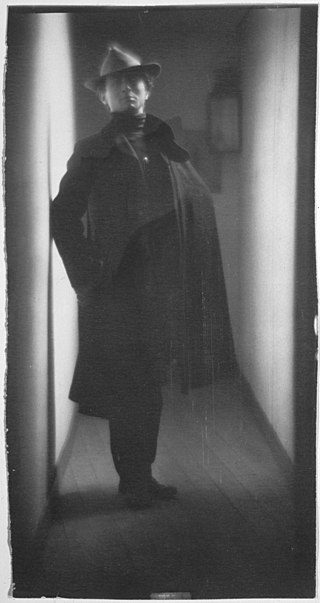
Edward Jean Steichen was a Luxembourgish American photographer, painter, and curator, renowned as one of the most prolific and influential figures in the history of photography.

Timothy Greenfield-Sanders is an American documentary filmmaker and portrait photographer based in New York City. The majority of his work is shot in large format.
Richard Misrach is an American photographer. He has photographed the deserts of the American West, and pursued projects that document the changes in the natural environment that have been wrought by various man-made factors such as urban sprawl, tourism, industrialization, floods, fires, petrochemical manufacturing, and the testing of explosives and nuclear weapons by the military. Curator Anne Wilkes Tucker writes that Misrach's practice has been "driven [by] issues of aesthetics, politics, ecology, and sociology." In a 2011 interview, Misrach noted: "My career, in a way, has been about navigating these two extremes - the political and the aesthetic."
Marion M. Bass, known as Pinky Bass or Pinky/MM Bass, is an American photographer, known for her work in pinhole photography.
Nina Berman is an American documentary photographer, filmmaker, author and educator. Her wide-ranging work looks at American politics, militarism, environmental contamination and post violence trauma. Berman is the author of three monographs: Purple Hearts – Back From Iraq; Homeland; and An autobiography of Miss Wish.

Cathy N. Davidson is an American scholar and university professor. Beginning July 1, 2014, she is a professor at the Graduate Center of the City University of New York.
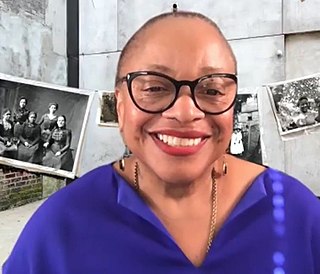
Deborah Willis is a contemporary African-American artist, photographer, curator of photography, photographic historian, author, and educator. Among her awards and honors, she is a 2000 MacArthur Fellow. She is currently Professor and Chair of the Department of Photography and Imaging at Tisch School of the Arts of New York University.

Manuel Rivera-Ortiz is a stateside Puerto Rican photographer. He is best known for his social documentary photography of people's living conditions in less developed nations. Rivera-Ortiz lives in Rochester, New York and in Zurich.
Birney Imes is an American photographer. He is best known for his photographs of the American South, especially his home state of Mississippi. His work is exhibited in museums across the United States.
Paul Kwilecki (1928–2009) was an American documentary photographer.
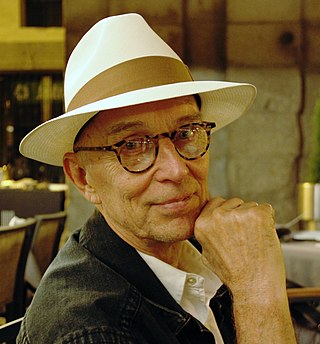
Burk Uzzle is an American photojournalist, previously member of Magnum Photos and president from 1979 to 1980.
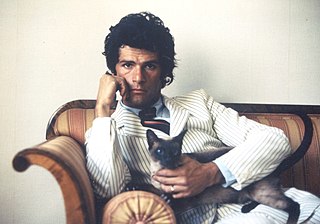
Victor Arimondi was an Italian American photographer and model who lived and worked in Europe before moving to the United States in the late 1970s. His early fashion photography, his portraits of Grace Jones and other artists, and his male nudes photographed in New York and San Francisco captured the pre-AIDS culture of the 1970s and early 1980s.
Rob Amberg is a North Carolina photographer, folklorist, and chronicler of a small Madison County mountain community, Revere, North Carolina, which he depicted in his long-term photo project Sodom Laurel Album. Amberg anticipated the completion of highway I-26 from Charleston, South Carolina, to the Tennessee Tri-Cities area and, starting in 1994, began photographing, interviewing, and collecting objects to document the cutting of a nine-mile stretch of I-26 through some of North Carolina's most spectacular vistas and some of the world's oldest mountains—a project which contributed to the publication of his book The New Road. His documentary photography is archived in a collection at Duke University Library.
Holly Roberts is an American visual artist known best for her combination of photography and paint. “Holly Roberts caused a stir in the fine art photography world of the eighties by fusing painting and photography, painting directly onto photographs”. Roberts lives and works in Corrales, New Mexico. Her work is in the permanent collection of several museums in the United States.

Jim Alexander is an American documentary photographer, photojournalist, activist, and teacher who is best known for being a "Participant Observer" and his photographs of human rights and black culture. In 1995, he was the first artist selected in the annual "Master Artist" program conducted by the City of Atlanta Department of Cultural Affairs. He would later be inducted into The HistoryMakers in 2006.
Frank Hunter is an American documentary and fine-art photographer and university educator. He is known for his photographic landscapes and his mastery of the platinum/palladium process. His interest in photographic processes includes the technical process of exposure and development as well as the psychological and spiritual aspects of creating photographic work. "Hunter has always been famed for transforming the utterly familiar to something rich and strange."
Jeanne Moutoussamy-Ashe is an American photographer and activist. She is best known for her work in magazines, newspapers, and several photography books, and also as an AIDS activist.
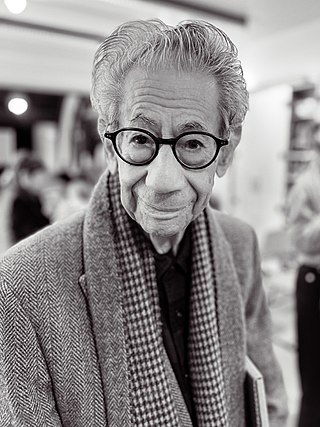
Gabor Szilasi is a Canadian artist known for the humanist vision of his social-documentary photography.
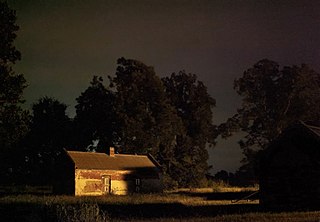
Jeanine Michna-Bales is an American artist who works primarily through photographic essays. Her projects blend documentary and fine art, research and history, examining forgotten, overlooked or invisible aspects of American history and contemporary socio-politics. She has often juxtaposed evocative landscape photographs and historical re-enactments with primary source documents such as maps, news clippings, government materials and artifacts in order to bring to life specific moments, experiences, places and eras from the past. New York Times writer and cultural historian Maurice Berger called her project on the Underground Railroad evocative and consequential in its visual portrayal of history through the eyes of an individual: "Her photographs are dark, atmospheric and haunting … They evoke both a sense of the adventure and peril of this journey, one that would have dire consequences if unsuccessful."
Lynn Saville is an American photographer of night time urban landscapes.
References
- ↑ "Hoop! Bill Bamberger Jr Visits the School – The Andrew Grene Foundation" . Retrieved February 11, 2022.
- 1 2 3 4 5 6 7 8 9 10 11 12 13 Kakissis, Joanna (January 18, 2004). "Framing a Home". The News and Observer. pp. 6G. Retrieved February 11, 2022– via Newspapers.com.
- 1 2 3 4 5 "Bill Bamberger, Author". North Carolina Literary Map. University of North Carolina-Greensboro. Retrieved February 23, 2022.
- 1 2 3 4 5 6 7 8 9 10 Provenzano, Frank (June 3, 2002). "Flint Central's Other Yearbook". Detroit Free Press. pp. F3. Retrieved February 11, 2022– via Newspapers.com.
- ↑ Blythe, Ann (November 11, 2022). "UNC-CH Students Will Tour State". The News and Observer. p. 17. Retrieved February 11, 2022– via Newspapers.com.
- 1 2 3 4 5 6 7 "Bill Bamberger". Art in Embassies. U.S. Department of State. Retrieved February 11, 2022.
- 1 2 3 "Bill Bamberger | Center for Documentary Studies at Duke University". documentarystudies.duke.edu. Retrieved February 11, 2022.
- 1 2 Brand, Jordan (March 7, 2020). "Bill Bamberger Discusses "Hoops" Photo Series". HYPEBEAST. Retrieved February 10, 2022.
- 1 2 3 4 5 6 7 8 "Closing: The Life and Death of an American Factory". Southern Oral History Program. University of North Carolina at Chapel Hill. Retrieved February 11, 2022.
- 1 2 3 4 5 6 7 8 9 10 11 12 Stricker, Ben (March 23, 2020). "'Photography is a really wonderful means of connecting with people': Q&A with photographer Bill Bamberger". The Black and White. Retrieved February 11, 2022.
- 1 2 3 4 "Closing: The Life and Death of an American Factory". Yale University Art Gallery. Retrieved February 10, 2022.
- ↑ "Behind the Scenes on the Set of Che - Photo Essays". Time . Retrieved February 11, 2022.
- ↑ "Closing: An American Factory". C-SPAN. May 9, 1998. Retrieved February 11, 2022.
- 1 2 Madsen, Deane Madsen (March 13, 2019). "New Photography Exhibit at the National Building Museum Surveys Basketball Courts Around the World". Architectural Record. Retrieved February 11, 2022.
- 1 2 "Bill Bamberger". Ann Stewart Fine Art. February 10, 2022. Retrieved February 11, 2022.
- 1 2 3 "Courtside: Photographs by Bill Bamberger". Nasher Museum of Art at Duke University. Retrieved February 11, 2022.
- 1 2 Broili, Susan (November 11, 1982). "Practices What He Teaches". The Durham Sun. pp. 2D. Retrieved February 11, 2022– via Newspapers.com.
- ↑ "Reception Set Saturday". The Herald Sun. March 13, 1983. pp. 3D. Retrieved February 11, 2022– via Newspapers.com.
- ↑ Nelson, Nels (November 9, 1984). "Photography by Nine Contemporary Artists are on Display at the Morris Gallery". Philadelphia Daily News. p. 68. Retrieved February 11, 2022– via Newspapers.com.
- ↑ "Arts/Crafts". Johnson City Press. April 18, 1984. p. 9. Retrieved February 11, 2022– via Newspapers.com.
- 1 2 3 Tenner, Edward. "Closing: The Life and Death of an American Factory Bill Bamberger Cathy N. Davidson". The Wilson Quarterly. 22 (3) – via JSTOR.
- 1 2 Anzilotti, Eillie (January 10, 2019). "These serene photos of global basketball hoops take you on a trip around the world". Fast Company. Retrieved February 11, 2022.
- 1 2 Phillips-Fein, Kim (September 21, 1998). "Pink Slips in Black and White". The Nation. 267 (8): 37–40 – via EBSCO.
- ↑ Filene, Peter (Winter 1995). "Reviews". Southern Cultures. 1 (2): 245–248. doi:10.1353/scu.1995.0086. S2CID 144206417 – via JSTOR.
- 1 2 Burritt, Chris (March 12, 1994). "The Passing of a Way of Life". The Atlanta Journal / The Atlanta Constitution. pp. A3. Retrieved February 11, 2022– via Newspapers.com.
- 1 2 Sies, Mary Corbin (November 2004). "Stories of Home and Affordable Housing". Home Cultures. 1 (3): 315–322. doi:10.2752/174063104778053482. S2CID 161330863 – via EBSCO.
- ↑ Wedner, Diane (June 4, 2004). "The Very Picture of Achievement". Los Angeles Times . pp. K13. Retrieved February 11, 2022– via Newspapers.com.
- 1 2 Kakissis, Joanna (January 18, 2004). "Framing a Home". The News and Observer. pp. 7G. Retrieved February 11, 2022– via Newspapers.com.
- 1 2 3 "Home Is Where this Art Gallery Is". The Charlotte Observer. March 6, 2007. pp. B1. Retrieved February 11, 2022– via Newspapers.com.
- 1 2 3 Stuart, Sheri L. (August 29, 2009). "Artist Bill Bamberger Hopes to Reconnect with Former Flint Central Students". The Flint Courier. Retrieved February 11, 2022.
- ↑ Provenzano, Frank (June 3, 2002). "Flint Central's Other Yearbook". Detroit Free Press. pp. F1. Retrieved February 11, 2022– via Newspapers.com.
- ↑ "Boys Will Be Men". Battle Creek Enquirer. August 27, 2003. p. 16. Retrieved February 11, 2022– via Newspapers.com.
- 1 2 3 "Bamberger's Artist Tour of "One Rwanda: Portraits of Contemporary Life"". YouTube. John Hope Franklin Center at Duke University. March 18, 2016. Retrieved February 11, 2022.
- ↑ "Rwanda". Bill Bamberger. Retrieved February 11, 2022.
- 1 2 Hurley, Amanda Kolson (March 27, 2019). "'Hoops' Photos Reveal the Geography of Basketball". Bloomberg. Retrieved February 11, 2022.
- 1 2 3 Lefrak, Mikaela (March 8, 2010). "Where Can You Build A Basketball Court? Anywhere, According To This New Exhibition". WAMU 88.5. Retrieved February 11, 2022.
- 1 2 "Hoop: Bill Bamberger | Hurley Media LLC". Hurley Media. June 20, 2011. Retrieved February 12, 2022.
- ↑ "Mayflower Award". North Carolina Literary Map. University of North Carolina - Greensboro. Retrieved February 23, 2022.